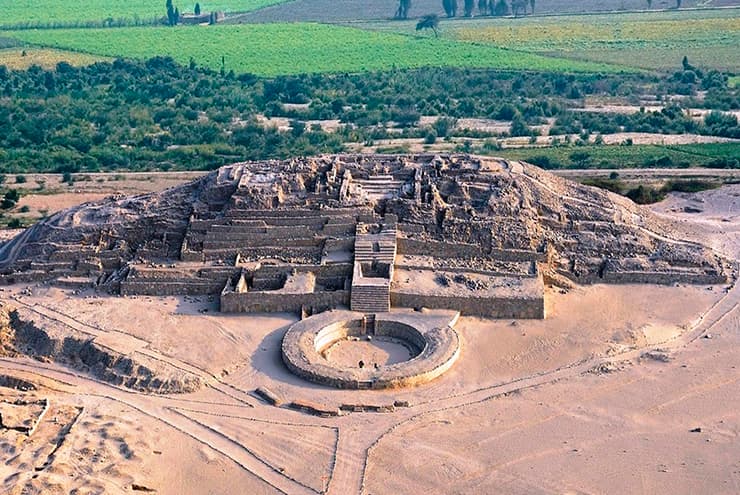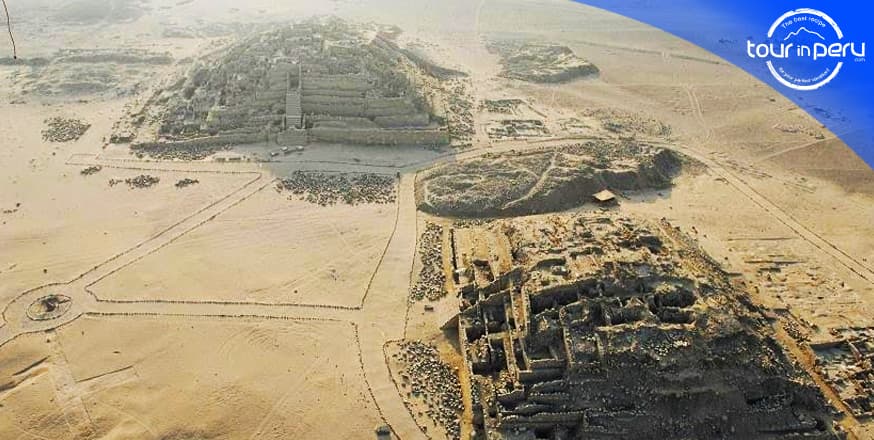The Pyramids of Caral
If you travel north of Lima for 75 miles, you find yourself in Peru’s Barranca region near the central Peruvian coast. Surrounded by desert, the pyramids are built on the Supe Valley terrace.
Caral is one of 18 ancient settlements in the Supe Valley region that were built by the Norte Chico civilization. Of them all, Caral and its pyramids are believed to have been the central hub of the settlements.
Caral holds the title of being the oldest known city in the Americas and among the oldest in the world. The pyramids in Caral were built about 5,000 years ago. That predates the pyramids of Egypt by 100 years! That also predates the Inca pyramids by a whopping 4,000 years. They are crafted from stone and reflect an architectural understanding that must have been complex and advanced.
They are believed to have been central to the religion of the region and were likely used in city gatherings and celebrations. Of the six pyramids in Caral, the largest is Piramide Mayor, measuring about 450 feet by 500 feet and rising more than 60 feet in height.
The pyramids had been passed over in 1941 as sand mounds due to how badly they had deteriorated. But in 1997, full exploration began in earnest.

The Pyramids of Cahuachi
In 2008, a new remote sensing technology stumbled upon something incredible in the Cahuachi desert. The images came from the satellite Quickbird as the technology was tested along the river Nazca.
You can imagine their surprise when the satellite gave them pictures of several buried pyramids that extended over a 97,000-square-foot area.
Actually, it wasn’t that surprising. There had already been some 40 mounds at Cahuachi that contain the remains of key structures. But the breakthrough was that they finally had a means of finding those buildings that were buried under Cahuachi’s sands.
No small part of the problem was the way that the colors of the structures and the colors of the soil and the sand had very little contrast.
Cahuachi is a big piece in the history of the Nazca civilization. They’re still famous for carving hundreds of geometric lines and images in the desert that are best viewed from the air. Only then can you tell that you’re looking at gigantic drawings of animals. Cahuachi was built as a ceremonial center, with pyramids, temples, and plazas molded from the very desert.
Blood flowed from human sacrifices led by priests. Some 20 severed heads from offerings were found inside one of the pyramids, each of them with a hole drilled in the center of the forehead. The site lost its sacred power in the eyes of the Nazca when a flood and a devastating earthquake rocked Cahuachi. So the Nazca left the region, but not before sealing all of their monuments and burying them beneath the desert sand.
The new discovery yielded a central pyramid measuring 300-by-328-feet at the base, asymmetrical and sitting on four degraded terraces.
For 2008, it was a grand discovery that submerged structures could be found from a vantage point in space. It not only allowed detection of new structures but provided more information that could be used to reconstruct approximations of what the original buildings had looked like.

Peru is full of mysteries inside and outside of Machu Picchu. Book a trip with TOUR IN PERU and see if you don’t stumble across some new mysteries of your own!








